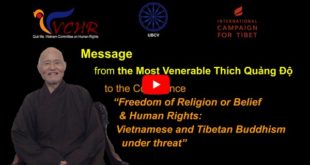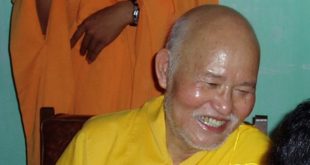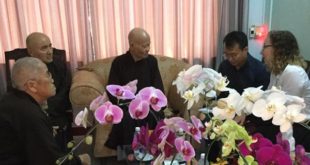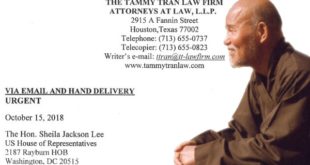PARIS, 23.05.2014 (IBIB) –The International Buddhist Information Bureau in Paris is informed that a member of the Buddhist Youth Movement (Gia đình Phật tử Việt Nam), an affiliate of the Unified Buddhist Church of Vietnam (UBCV) immolated herself at 5.30am today, 23rd May 2014 outside the Reunification Palace, the former Independence Palace in Ho Chi Minh City (Saigon).
She is Lê Thị Tuyết Mai (Buddhist name Dong Xuan), born in 1947, an active figure in the Buddhist Youth Movement (BYM), Vice-Chair of the Quang Duc BYM Executive Committee in Saigon. The Police and municipal authorities extinguished the flames and immediately took her to the hospital. Security Police have surrounded the hospital and no-one has been allowed to see her.
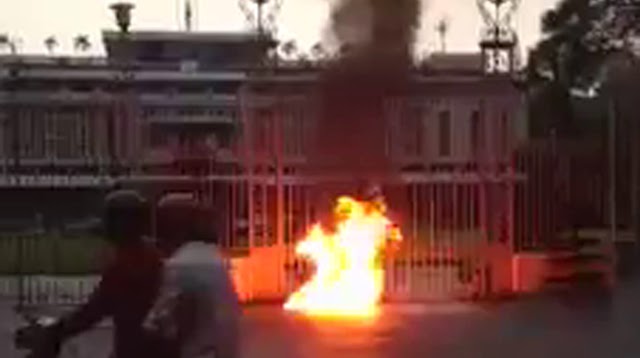 |
Le Cong Cau, head of the Buddhist Youth Movement in Hue, told IBIB this morning that over the past few weeks, several members of the Buddhist Youth Movement – including Le Thi Tuyet Mai – had sent letters to the UBCV asking permission to immolate themselves to protest religious repression against the UBCV and especially to denounce Chinas encroachments on Vietnamese sovereignty, with the recent deployment of deep sea drill ship Haiyang 981 in Vietnams exclusive economic zone off the Paracel islands.
Le Cong Cau said UBCV leader Thich Quang Do strongly opposed these requests and called upon Buddhists to keep calm, telling them to “resist oppression by staying alive and struggling for your country and your beliefs”. Earlier this month, Thich Quang Do had launched a “Declaration” on the China situation, calling on Vietnamese to rally together in an alliance against Chinese aggression. Le Cong Cau fears that Le Thi Tuyet Mai went ahead with her protests despite the opposition of the UBCV leadership.
Quang Duc is the UBCVs name for the geographic region covering Saigon and its suburbs, taken after that of the Buddhist monk who immolated himself in Saigon in 1963. Before 1975, the UBCV divided central and southern Vietnam into eight regions, each of which was named after one of Vietnams great Zen masters.
 Quê Me Quê Me: Action for democracy in Vietnam & Vietnam Committee on Human Rights
Quê Me Quê Me: Action for democracy in Vietnam & Vietnam Committee on Human Rights

